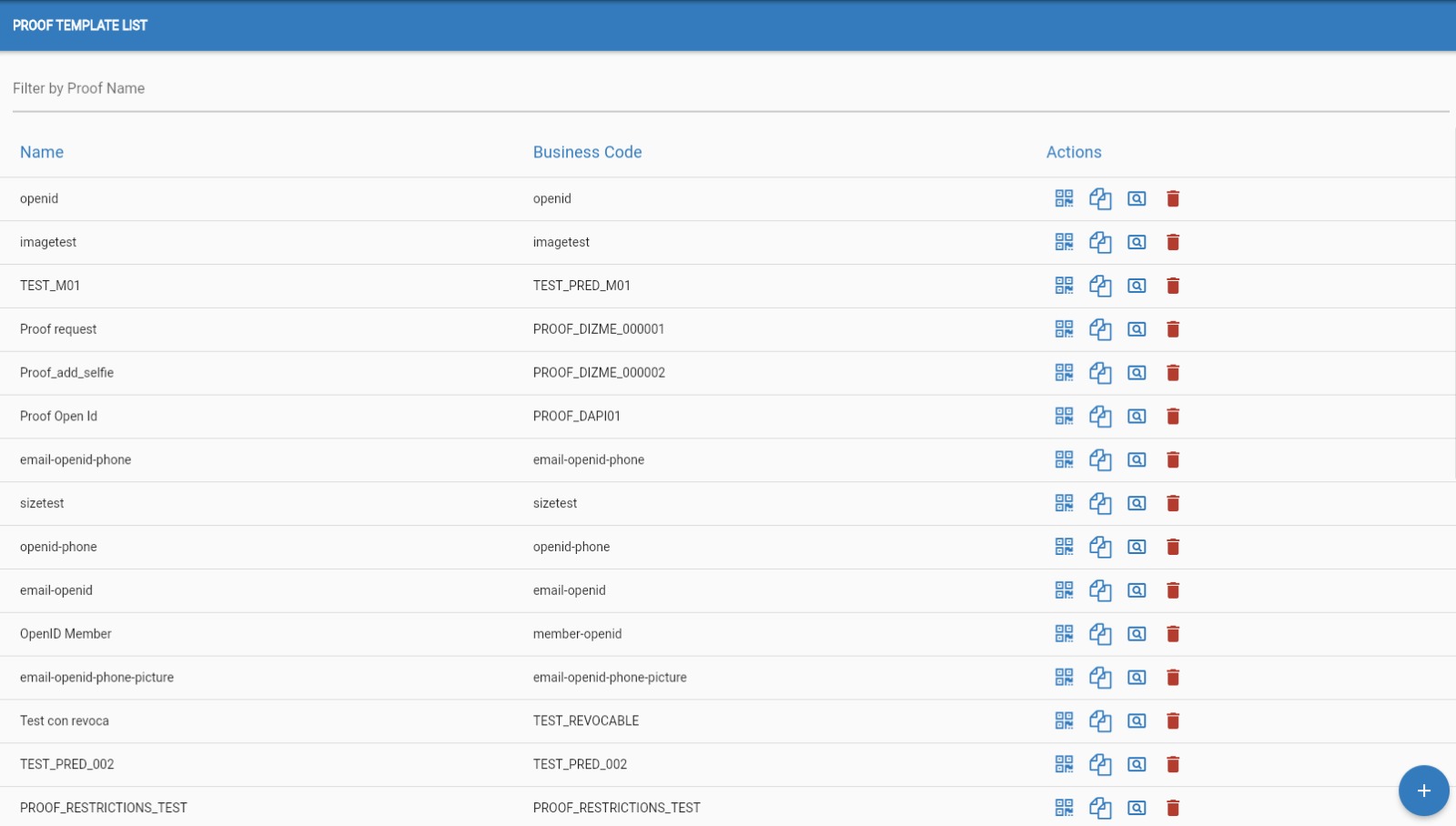Proof Template Page
The Proofproof is the answerowner's SSI of the ownerresponse to a proof request,request ifin credentialsa areself-sovereign identity (SSI) system. Credentials serve as digital representationrepresentations of an ID,identification card, passport, driver's license, or club membership card, while a proof is the certificationcertifies that the OPERATORoperator haspossesses the rightnecessary credentials needed for thea proof request.
HolderIn an SSI system, the holder of credentials can generate verifiable representationsrepresentations, (informally namedknown Proof)as onceproofs, after a verifier creates a Proofproof request.
Proof requests can be composed byof 2 different attributes:
- Restricted
- Self-attested
Restricted attibutesattributes are taken from schemes or credentials connected to the organization. Restricted attributes can be REVEALED or UNREVEALED.
-
Revealed
attributes will notify the USER that the proof will request and check that field, meaningmeans that the USER will send to the Verifier theknowledgecontent of thatcredential.field. -
Unrevealed, also known as zero-knowledge, won’t show up
duringtheprocesscontent ofproofthatfor the USERfield and the Verifier will only know theresultexistenceheofneed,it, like:
"Does the USER have a college degree?" the
verifyverification will get a "yes/no" answer.
-
Self-attested attributes are not
conntectedconnected to schemas or credentials, this type ofattributesattributeareis a certification that the USER vouch for, without the need for a specific credential. Self-attested can have differenttypetypes andthethey could be mandatory or not.
If a self-attested attribute is mandatory, the USER is forced to fill the field in the proof request.
If a self-attested attribute is not mandatory, it won’t be necessary to fill this field during the proof request.

